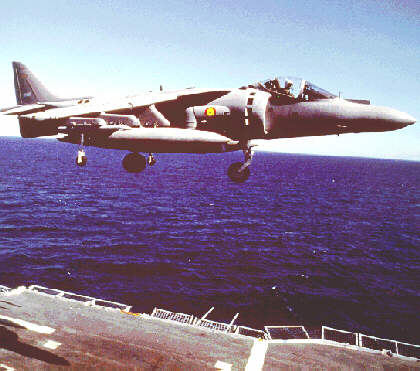AESA RADAR TEST FLOWN ON RAFALE
In April 2002, the DGA, the French defence procurement agency, appointed Thales to develop an active array radar demonstrator optimised for the Rafale omnirole fighter. Called DRAA (Démonstrateur Radar à Antenne Active, or Active Array Radar Demonstrator), the programme culminated in a series of demanding flight tests to validate its detection performance. Although the development schedule was extremely tight, the DRAA met all programme milestones on time. This Active Electronically Scanned Array (AESA) demonstrator will pave the way to a production equipment for the Rafale.
An extremely fast programme
Today, the Rafale is the only European fighter fitted with an electronic scanning radar. Its remarkable RBE2 radar is already in full operational service with the French Navy and will soon enter service with the French Air Force. It is far more advanced than legacy mechanically-steered radars used by most of the Rafale’s competitors.
Their flexibility and performanceare clearly limited by the complex hydraulic drives associated with moving their radar dish around. With the adoption of an active antenna, RBE2 radar performance will be even further increased : detection and tracking ranges will be significantly improved, angular coverage will be considerably expanded and reliability will be boosted to unprecedented levels. The state-of-the-art DRAA active array is composed of numerous solid-state transmit and receive GaAs modules. They are used to point and move the radar beam at an extremely high speed.
Aircrews will also benefit from improved situational awareness while observability of the aircraft will be reduced. Additionally, the introduction of the active array paves the way for the development of new radar functions in such areas as counter-countermeasures. The numerous T/R modules also virtually eliminate mechanical breakdowns and reliability has been dramatically improved thanks to an increased redundancy: a number of modules can fail without affecting overall radar performance. Antenna status can be established in real-time, and maintenance operations programmed
accordingly, leading to considerably lower operating costs for operators. As a result, active array technology offers significantly greater operational readiness than previous antenna technologies. To develop the DRAA, Thales has taken advantage of its long experience in solid-state technology which dates back to the early 90s when the Cobra battlefield radar was conceived. Since then, other radar applications have benefited from solidstate advances, and numerous surface warships and ground-based defence systems
are equipped with such radar systems. “The first development studies for the airborne AESA array for the Rafale had been carried out in 1999, explains Philippe Ramstein, Thales Director for the Rafale Programme. The RBE2 variant currently in frontline service is already an electronic scanning radar, and changes to adapt the new AESA array are kept to a strict minimum. The DRAA fully complies with the plug-and-play concept, and the passive and active arrays are thus totally interchangeable. This clearly facilitates upgrades, so all French Rafales will have the capability to be equipped with an AESA.”
Test-flying the DRA
In December 2002, the first flight of the AESA system was carried out in a Mystere XX flying test bed belonging to the French MoD located in the Flight Test Centre at Cazaux (South-West of France). Subsequently, the DRAA demonstrator was fitted to two seat production Rafale B301. “For us, it was essential to prove to our customers that we could easily fit a new array to the existing RBE2 hardware, stresses Jean-Marc Goujon, Rafale Radar Programme Manager. As such, one of the main goals of the DRAA programme was to demonstrate that the new array could easily be fitted to the B301’s current RBE2 electronic scanning radar without any modifications of the whole radar architecture. This modification was a total success, Thales and Dassault engineers being able to complete the task in less than three hours!
This is a considerable achievement that proves impossible for our competitors who would have to completely redesign and rebuild their radar sets to accommodate an AESA.” The first flight in Rafale B301 was recorded from Istres in May 2003. During the comprehensive flight test programme, the fully integrated Band X DRAA radar successfully transmitted, received and collected radar data, confirming all Thales prediction, a clear indication that the company totally masters AESA technology.
DRAAMA towards the serial production AESA RBE2
For Thales, the next stage of the ongoing development process for the Rafale fighter is the DRAAMA (Démonstrateur Radar à Antenne Active Modes Avancés, or Advanced Modes Active Array Radar Demonstrator) programme which was officially launched by the DGA in July 2004. Optimised to prepare full-scale production, the DRAAMA array will be entirely new and will benefit from the latest developments in radar/solid-state technology. It is worth noting that all components of the DRAAMA antenna will be built in Europe, a key factor for total autonomy and independence.
By the end of 2007/early 2008, DRAAMA development and test flying programme will have been completed, and qualification should have been granted by the DGA. The advent of the DRAA and DRAAMA programmes will allow engineers to shortly equip production Rafales with cutting edge radar technology. Developed in a record time, the DRAA radar already proved that Thales is fully capable of meeting stringent requirements with state-of-the-art solutions. With the AESA, the Rafale Omnirole fighter will undoubtedly become more lethal, more survivable, more reliable and more affordable, key advantages for operators in search of the ultimate fighter.
Fuente: Rafale International
Saludos




















 , no sabia...ok...dame tiempo para traducir entonces
, no sabia...ok...dame tiempo para traducir entonces




 Bueno pues... precisamente el de la foto no está construido en Europa, ensamblado tal vez... pero no construido.
Bueno pues... precisamente el de la foto no está construido en Europa, ensamblado tal vez... pero no construido.

Bueno pues... precisamente el de la foto no está construido en Europa, ensamblado tal vez... pero no construido.



